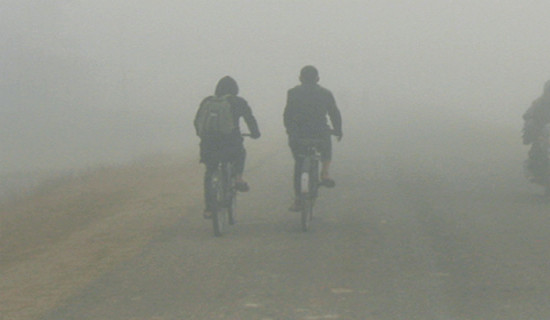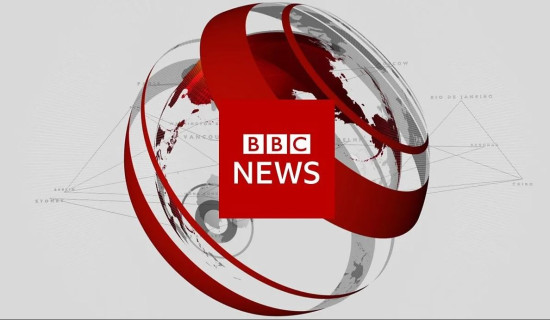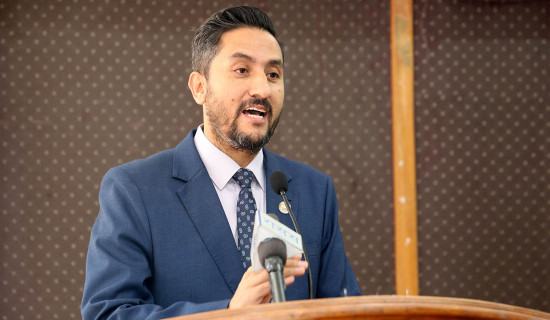- Wednesday, 17 December 2025
Ruling Alliance On Rocky Route
Even if the current ruling alliance is chugging along with the support of enough legislators in the House of Representatives, it must manage hurdles for its long-term survival. Though several coalition leaders have stated that the existing partnership will continue until the next general elections in 2027, this declaration appears premature because lust for power, party interests, mistrust, and pressure from various quarters, particularly from foreign power centres, may cause trouble for the ruling coalition’s longevity.
In a country where parties switch allegiances for fat portfolios, no one knows what will happen to the coalition in the next year or so. We know the present alliance of five parties was hastily cobbled up because two major parties in the coalition — the CPN-Maoist Centre and the CPN-UML — wanted to topple the previous ruling coalition, which included the Nepali Congress as its core component, and the current partnership arose from a desire to send the largest party in parliament to the opposition bench.
Concerns of citizens
The Rastriya Swatantra Party (RSP), a key part of the current alliance, aspires to be in government to address the concerns of citizens. According to its chair, the party joined the government because they wanted to perform to win the hearts of people. Despite its various claims, the RSP entered the alliance out of necessity, not because of ideological similarities with the three left-wing parties in the current coalition. RSP’s chair, Rabi Lamichhane, has frequently stated that all the party’s ministers carry resignation letters with them. He meant to suggest that they would leave the government if they found they were not given the freedom to perform as they chose. This type of gesture from a key member is enough to put the coalition on a knife’s edge.
Although he has gained strong backing from UML chair KP Sharma Oli, Lamichchane is facing a quandary that may even cost him his ministerial position. It is worthwhile to note that the Nepali Congress has upped its ante against the RSP and has demanded that the government form a parliamentary committee to investigate the charges against him for misappropriating the cooperative’s funds. As the Congress has disrupted House proceedings to put pressure on the government, any formation of such a committee may infuriate the RSP chair, causing problems for the alliance. However, considering PM Prachanda's and Oli’s current stance, it is unlikely that they will form such an inquiry. The RSP, with its 20 legislators, has been a great help in bolstering the current coalition government’s position.
Importantly, the present coalition’s three communist parties — the Maoist Centre, UML, and CPN- Unified Socialist — do not adhere to common political principles. The Maoist Centre is recognised for its extreme leftist ideas, whereas the UML claims to be guided by the ideal of people’s democracy. The RSP says that its guiding principles are related to democratic values and spirits similar to those of the Nepali Congress. These divergent principles make the key alliance partners strange bedfellows.
UML chair Oli and the chair of its splinter group, Unified Socialist, Madhav Kumar Nepal, were feuding until Prime Minister Pushpa Kamal Dahal Prachanda decided to break the alliance by opposing the Nepali Congress. They agreed to rotate prime ministerial responsibilities among themselves, which brought Nepal into the coalition fold. Meanwhile, the UML chair recently intimated that he was opposed to the provision of rotating premiership among the three leaders, which must have given Nepal a bad feeling. Leader Nepal was about to start his tenure as prime minister prior to the sudden change in the ruling alliance.
Meanwhile, the attempt of PM Prachanda to include the UML in the Socialist Front has come a cropper after Oli declined to join the front. Adding the UML to the front would make it more robust and help it counter opposition moves while staying at the forefront of electoral politics. The UML’s rejection highlights the difficulties faced by the largest communist party in joining the front formed by parties that broke away from the NCP because of a disagreement over the prime ministerial position.
Political stability
Meanwhile, the Nepali Congress, which has been nursing its wounds after failing to stop Prachanda from changing alliance partners, is said to be engaging in a move to gain the support of the UML and other parties in creating a new coalition by excluding the Maoist Centre. For many, if the UML agrees with the Nepali Congress, the two largest parties in parliament will govern the nation, providing much-needed political stability. Since the Congress is presumed to offer the UML chair premiership, it remains uncertain how long the existing coalition will endure if the UML chair accepts it. It has been learned that the Nepali Congress has been doing what it can to break the alliance for which it has attempted to secure support from all its supporters and allies.
The Congress has also tried to form a front by including non-communist parties in it. The current coalition recently presented a common minimum programme (CMP), which they claimed would serve as their guiding philosophy for operating the government. These programmes appear to be similar to several previous ones. Coalition partners will have a difficult time achieving success and obtaining the CMP results. Meanwhile, coalition parties have divergent views on how to settle the lingering peace process which is also included in the CMP. The UML prioritises a victim-centric peace process, while the Maoist Centre has tried to provide amnesty to the accused ones with favourable clauses in the peace process document. It may cause differences between the two parties.
To sum up, it is evident that Nepali politics is a complex and ever-changing landscape, with various factors influencing the stability of ruling alliances. While current partners must avoid past mistakes and disruptive actions, they must navigate emerging challenges in order to secure full tenure for the government. The threat to the current coalition is a real one, requiring careful communication and cooperation among all partners.
(Upadhyay is former managing editor of this daily)
















